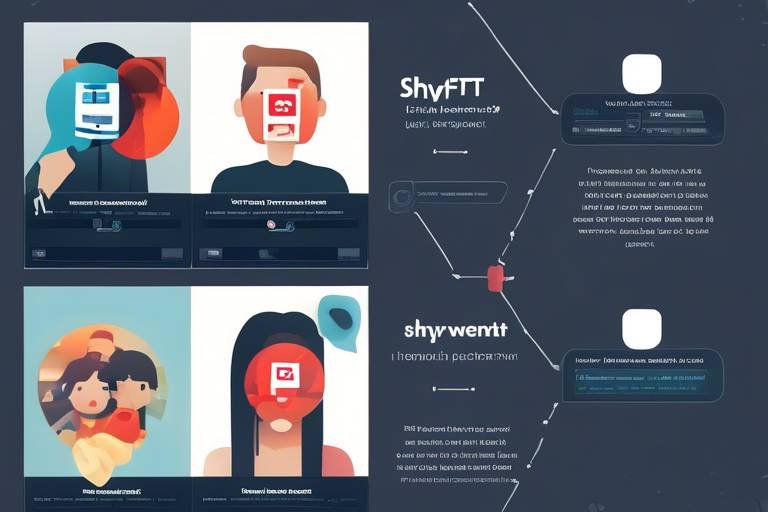Metis - A Layer 2 Solution for Ethereum
In the ever-evolving world of blockchain technology, scalability and efficiency are paramount. Enter Metis, a revolutionary Layer 2 solution tailored specifically for the Ethereum network. Imagine a bustling highway during rush hour; traffic moves at a snail's pace, and frustration builds. Now, picture a newly constructed express lane that alleviates congestion, allowing vehicles to zoom past. This is precisely what Metis aims to achieve for Ethereum. By enhancing transaction speeds and slashing costs, Metis not only makes decentralized applications (dApps) more accessible but also empowers developers and users alike to engage with the blockchain without the hindrance of high fees and slow transactions.
What sets Metis apart is its unique approach to addressing the challenges faced by Ethereum. As the demand for decentralized finance (DeFi) applications and non-fungible tokens (NFTs) skyrockets, the need for a robust solution becomes clear. Metis acts as a layer that sits atop the Ethereum blockchain, processing transactions off-chain while still leveraging the security and decentralization of the main chain. This dual-layer architecture allows for a significant increase in throughput, making it a game-changer in the blockchain ecosystem.
But why should developers and users choose Metis over other solutions? The answer lies in its seamless integration of features, including a user-friendly interface and built-in decentralized autonomous organization (DAO) capabilities. With Metis, creating and managing dApps becomes a walk in the park. Developers can focus on building innovative solutions without getting bogged down by the complexities of underlying infrastructure. Moreover, the DAO feature encourages community involvement, allowing users to have a say in governance and decision-making processes.
As we delve deeper into the world of Metis, it’s essential to understand its scalability solutions. By utilizing cutting-edge rollup technology, Metis can handle a vast number of transactions simultaneously, ensuring that applications can scale effortlessly as their user base grows. This is particularly crucial in today's fast-paced digital landscape, where user expectations are higher than ever. The combination of speed, cost-effectiveness, and user empowerment makes Metis a compelling choice for anyone looking to harness the power of Ethereum.
In summary, Metis is not just another Layer 2 solution; it’s a transformative force that has the potential to reshape the Ethereum landscape. By addressing the core issues of scalability and accessibility, it opens the door to a new era of blockchain innovation. As we continue to explore its features, benefits, and future prospects, it’s clear that Metis is poised to make a significant impact on the blockchain ecosystem.

Understanding Layer 2 Solutions
Layer 2 solutions have emerged as a critical component in the evolution of blockchain technology, particularly in enhancing the capabilities of major networks like Ethereum. Imagine a bustling highway during rush hour; the main road (Layer 1) gets congested with traffic, leading to delays and frustration. Layer 2 solutions act like parallel lanes, allowing vehicles to bypass the jam and reach their destinations faster. They operate on top of the primary blockchain, alleviating congestion and reducing transaction fees while still leveraging the security and decentralization that the main network provides.
One of the primary challenges faced by blockchain networks is scalability. As more users and applications flock to these platforms, the demand for faster and cheaper transactions skyrockets. Layer 2 solutions tackle this challenge by processing transactions off the main chain, which not only speeds up the transaction times but also minimizes costs. This is particularly beneficial for decentralized applications (dApps), which often require numerous transactions to function effectively.
There are several types of Layer 2 solutions, each employing different technologies to achieve their goals. Some of the most common methods include:
- State Channels: These allow participants to conduct transactions off-chain and only settle the final result on the main chain, which drastically reduces the number of transactions that need to be processed on the primary network.
- Rollups: This technique bundles multiple transactions into a single one, which is then submitted to the main chain. Rollups can further be categorized into Optimistic Rollups and ZK-Rollups, each with unique mechanisms to ensure security and efficiency.
- Plasma: A framework that allows the creation of child chains, which can process transactions independently while still being anchored to the main chain for security.
The beauty of Layer 2 solutions lies in their ability to maintain the core principles of blockchain—security, decentralization, and trust—while enhancing performance. They provide a much-needed breath of fresh air for developers and users alike, enabling a smoother experience when interacting with dApps. Moreover, as the blockchain ecosystem continues to grow, the role of Layer 2 solutions will become increasingly vital in ensuring that networks can handle the rising demands without compromising on quality or security.
In summary, Layer 2 solutions are not just an add-on; they are essential for the future of blockchain technology. By improving scalability and efficiency, they open the door for mass adoption and innovative applications that can transform industries. As we delve deeper into the world of Metis, it's crucial to understand how these solutions work and the significant impact they can have on the Ethereum ecosystem.

What is Metis?
Metis is a cutting-edge Layer 2 scaling solution built specifically for the Ethereum blockchain. Imagine a bustling highway during rush hour; traffic is slow, and it’s frustrating for everyone trying to get to their destination. Metis acts like an express lane on that highway, allowing transactions to flow smoothly and quickly, reducing congestion and making the entire experience more enjoyable. By leveraging advanced technology, Metis aims to significantly improve transaction speeds and lower costs, making decentralized applications (dApps) more accessible and user-friendly for everyone.
One of the standout features of Metis is its focus on user experience. It provides a seamless interface that allows developers and users to interact with the blockchain without the usual complexities. This means that even those who are not tech-savvy can navigate through dApps effortlessly. Additionally, Metis is designed to support a wide range of applications, from finance and gaming to social networking and beyond, making it a versatile choice for developers looking to build on Ethereum.
Moreover, Metis integrates a unique framework that includes Decentralized Autonomous Organization (DAO) capabilities, empowering users to create and manage their own governance structures. This feature not only enhances community engagement but also fosters a sense of ownership among users, making them active participants in the ecosystem. With Metis, developers can easily set up their own DAOs, enabling transparent decision-making and community-driven projects.
In terms of technology, Metis employs innovative rollup technology to achieve impressive scalability. This allows it to handle a higher volume of transactions without sacrificing speed or security. As the demand for dApps continues to grow, Metis is well-positioned to accommodate this increase, ensuring that users can enjoy fast and cost-effective transactions.
In summary, Metis is not just another Layer 2 solution; it’s a game-changer for the Ethereum ecosystem. With its user-friendly interface, DAO integration, and advanced scalability features, Metis is paving the way for a more efficient and inclusive blockchain experience. Whether you're a developer looking to create the next big dApp or a user eager to explore the world of decentralized applications, Metis offers the tools and infrastructure to make it happen.
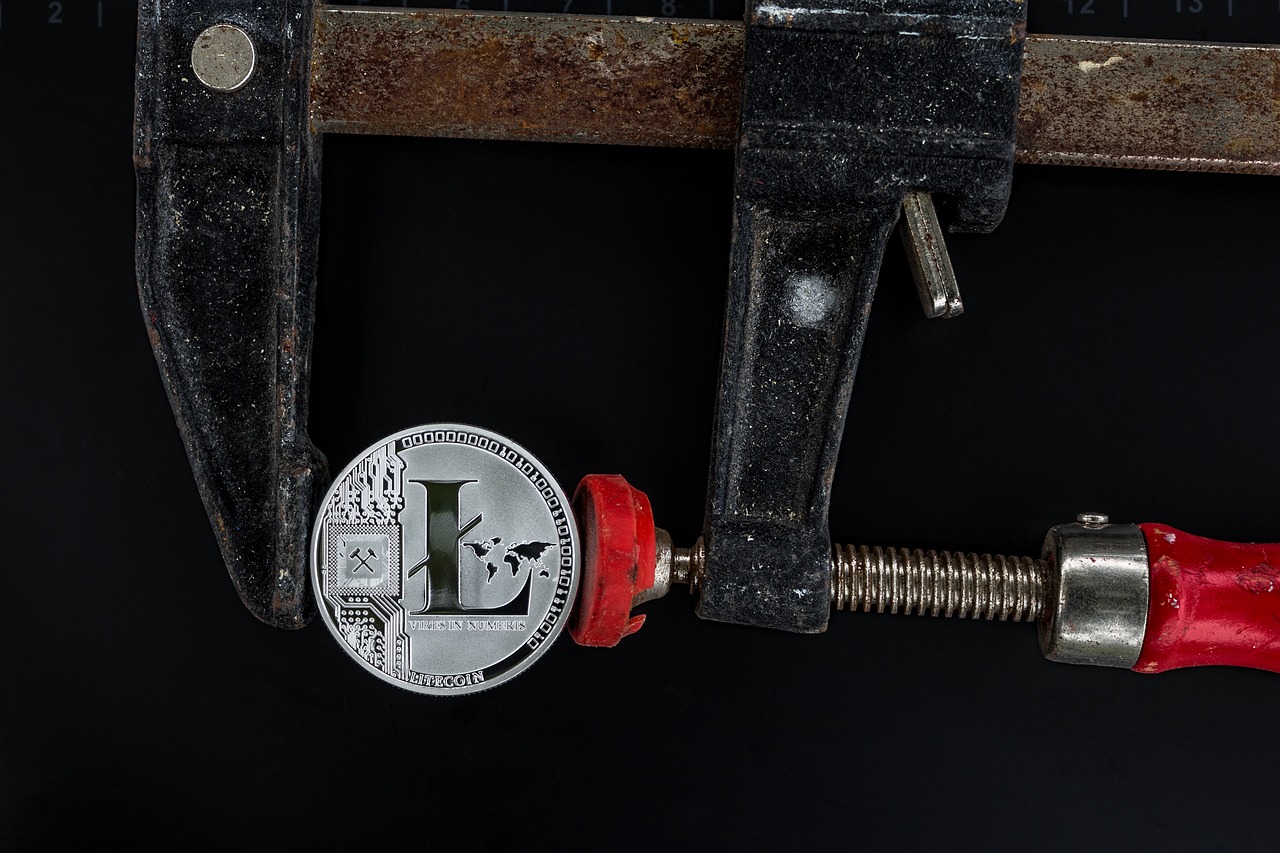
Key Features of Metis
Metis is not just another Layer 2 solution; it's a game-changer for the Ethereum ecosystem. One of its standout features is its user-friendly interface, which makes it incredibly accessible for both developers and casual users. Imagine trying to navigate a complicated maze, only to find a straightforward path laid out before you. That’s what Metis offers—an intuitive platform that simplifies the process of building and interacting with decentralized applications (dApps).
Another remarkable aspect of Metis is its fast transaction processing. In a world where speed is everything, Metis leverages innovative rollup technology to ensure that transactions are confirmed in record time. This means users can enjoy a seamless experience without the frustrating delays often associated with blockchain transactions. Whether you're trading tokens or engaging in a DeFi protocol, you can count on Metis to keep things moving swiftly.
Moreover, Metis comes equipped with built-in decentralized autonomous organization (DAO) capabilities. This feature empowers users to create and manage their own DAOs effortlessly. Think of it as having a toolkit that allows you to craft your governance structures, enabling community engagement and collaborative decision-making. This not only enriches the user experience but also fosters a sense of ownership and responsibility among participants.
To summarize, here are some of the key features of Metis:
- User-Friendly Interface: Simplifies interaction with dApps.
- Fast Transaction Processing: Ensures quick confirmations, enhancing user experience.
- Built-in DAO Capabilities: Allows users to create governance structures for their applications.
In addition to these features, Metis also prioritizes security and decentralization. By employing advanced cryptographic techniques and maintaining a decentralized architecture, Metis ensures that user data and assets are protected against vulnerabilities. This dual focus on performance and security makes Metis a compelling choice for developers looking to build robust applications.
Ultimately, Metis is designed to not only enhance the Ethereum ecosystem but also to empower users and developers alike. With its unique blend of features, it stands out as a promising solution in the ever-evolving landscape of blockchain technology.
Here are some common questions regarding Metis:
- What makes Metis different from other Layer 2 solutions? Metis combines user-friendliness with advanced features like DAO integration, making it accessible and powerful.
- How does Metis ensure transaction security? Metis employs advanced cryptographic techniques and maintains a decentralized architecture to protect user data and assets.
- Can I create my own DAO on Metis? Absolutely! Metis provides built-in capabilities for users to create and manage their own DAOs easily.

Decentralized Autonomous Organizations (DAOs)
Decentralized Autonomous Organizations, or DAOs, represent a revolutionary shift in how organizations can operate in the digital age. Imagine a company that runs without a traditional hierarchy, where decisions are made collectively by its members rather than a select few at the top. That's precisely what DAOs facilitate. Built on blockchain technology, DAOs empower users to take part in governance and decision-making processes in a transparent and secure manner. This is particularly significant in the context of Metis, where DAOs are integrated seamlessly into its framework, allowing developers and users to create and manage decentralized applications (dApps) with remarkable ease.
At the heart of a DAO is its governance model, which is typically structured around smart contracts. These contracts define the rules of the organization and automate decision-making processes. For instance, if a community wants to fund a new project, members can vote on proposals using tokens that represent their stake in the organization. This democratic approach not only enhances community engagement but also ensures that every voice is heard, fostering a sense of ownership among participants. In a world where transparency is paramount, DAOs provide a solution that aligns with the ethos of decentralization.
Furthermore, the integration of DAOs within Metis allows for innovative governance structures. Users can create tailored governance models that suit their specific needs, whether they are focused on funding, project development, or community initiatives. This flexibility is crucial as it enables various communities to adapt their governance to their unique circumstances. For example, a DAO focused on a DeFi project might prioritize financial transparency and risk management, while a community-driven art project could emphasize creative collaboration and shared ownership of intellectual property.
The impact of DAOs on the Ethereum ecosystem cannot be overstated. By empowering users to take control of their applications, Metis enhances the potential for innovation and collaboration. As more developers and users embrace this model, we may witness a transformation in how organizations operate, moving away from traditional corporate structures towards more fluid, community-driven models. The possibilities are endless, and as we continue to explore the potential of DAOs, it becomes clear that they are not just a trend but a fundamental shift in how we think about governance in the digital world.
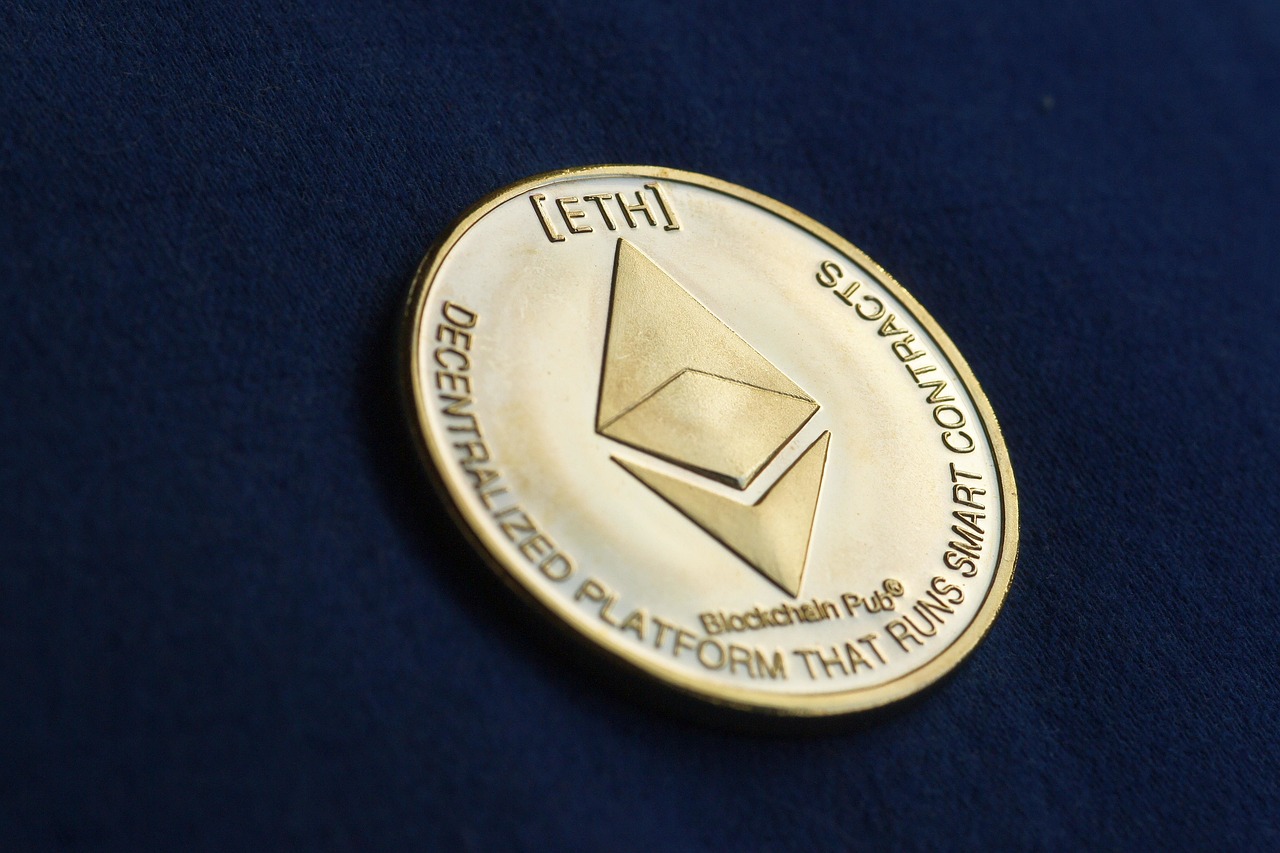
Scalability Solutions
When it comes to blockchain technology, scalability is the name of the game. Imagine trying to drive a sports car on a congested highway—frustrating, right? That's how blockchain networks often feel when they face high transaction volumes. This is where Metis shines with its innovative rollup technology. By bundling multiple transactions into a single one, Metis effectively reduces the load on the Ethereum network, allowing for a smoother and faster transaction experience.
The beauty of Metis' scalability solutions lies in their ability to maintain the core principles of security and decentralization. While many solutions simply focus on speed, Metis ensures that users can enjoy the benefits of quick transactions without sacrificing the trust and safety that blockchain technology promises. Think of it as a well-oiled machine: every cog and gear works in harmony to enhance the overall performance.
One of the standout features of Metis is its capacity to handle a growing user base. As more people flock to decentralized applications (dApps), the need for a platform that can scale efficiently becomes increasingly crucial. Metis addresses this need by offering a solution that can easily adapt to fluctuations in demand. Here’s a quick breakdown of how Metis achieves its scalability:
- Optimized Transaction Processing: By using rollups, Metis can process transactions off-chain and then settle them on-chain, minimizing congestion.
- Dynamic Resource Allocation: Metis intelligently allocates resources based on real-time demand, ensuring optimal performance even during peak times.
- Interoperability: The platform is designed to integrate seamlessly with other blockchain networks, providing users with a broader ecosystem to explore.
In essence, Metis is not just a solution to current scalability issues; it’s a forward-thinking approach that anticipates the future needs of the blockchain ecosystem. As the demand for dApps continues to surge, having a robust scalability solution like Metis will be essential for developers looking to create applications that can stand the test of time.
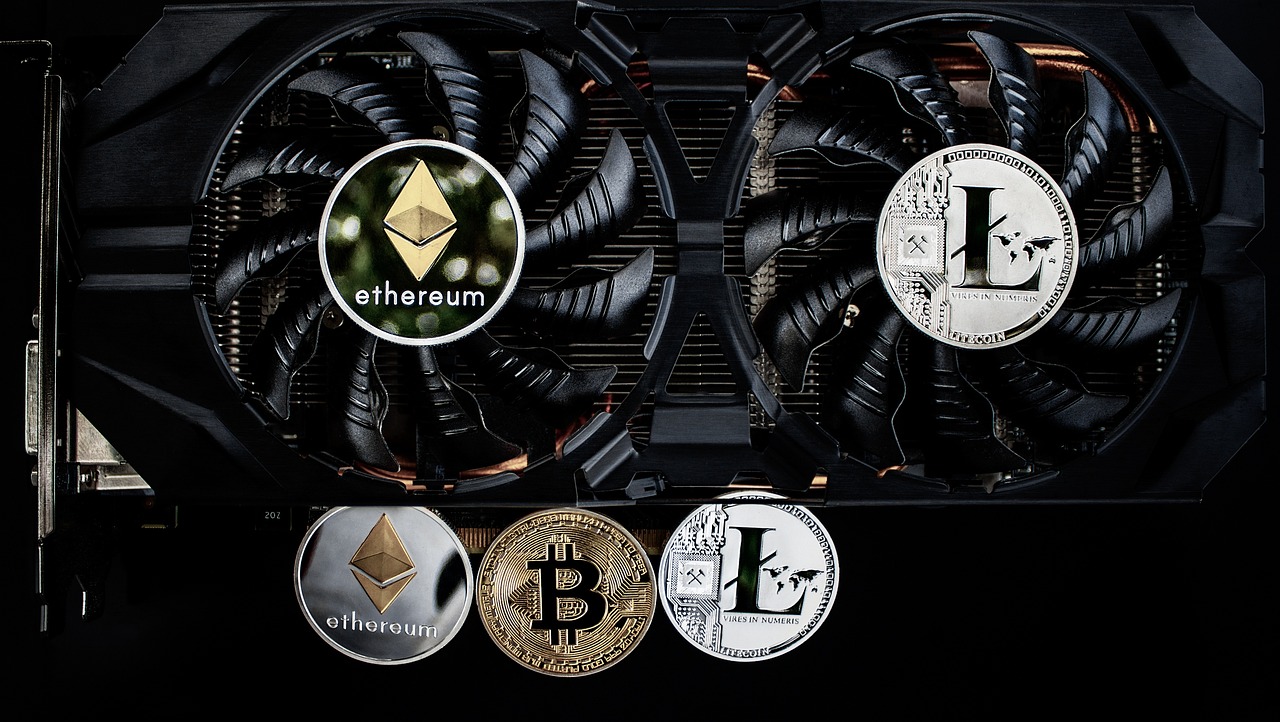
Benefits of Using Metis
When it comes to blockchain technology, the importance of scalability cannot be overstated. Metis emerges as a beacon of hope in this domain, offering a multitude of benefits that cater to both developers and users. One of the standout advantages is the significantly lower transaction fees. Unlike Ethereum's mainnet, where fees can skyrocket during peak times, Metis provides a more affordable alternative, allowing users to interact with decentralized applications (dApps) without breaking the bank.
Another remarkable benefit is the fast transaction confirmation times. In a world where speed is of the essence, Metis leverages its Layer 2 architecture to ensure that transactions are processed swiftly. Imagine sending a transaction and seeing it confirmed almost instantly—this is the reality with Metis. This rapid processing not only enhances user satisfaction but also promotes higher engagement levels within dApps.
Moreover, the overall user experience is significantly enhanced on the Metis platform. With a user-friendly interface, even those who are not tech-savvy can navigate and utilize dApps with ease. This accessibility is crucial for mainstream adoption, as it lowers the barrier to entry for new users. In fact, the more intuitive the platform, the more likely it is to attract a diverse user base.
To put it simply, here are some of the key benefits of using Metis:
- Lower Transaction Fees: Enjoy cost-effective transactions that encourage more frequent interactions.
- Faster Confirmation Times: Experience near-instant transaction processing, enhancing user engagement.
- Enhanced User Experience: A user-friendly interface makes it easy for anyone to start using dApps.
- Robust Security: Metis retains the security features of Ethereum, ensuring that users' assets are safe.
In addition to these benefits, Metis also offers flexibility for developers. The platform allows for the creation of tailored solutions that can address specific needs. Whether you're building a decentralized finance (DeFi) application or an NFT marketplace, Metis provides the tools necessary to innovate and thrive. This adaptability is vital in the rapidly changing blockchain landscape, where new trends and technologies emerge almost daily.
As we look to the future, the potential of Metis is undeniable. With its commitment to enhancing the Ethereum ecosystem, it stands as a promising solution for those seeking to harness the power of blockchain technology. Whether you're a developer aiming to create the next big dApp or a user looking for a seamless experience, Metis offers a compelling option that is hard to ignore.
1. What is Metis?
Metis is a Layer 2 scaling solution for Ethereum that aims to improve transaction speeds and reduce costs, making it easier for users to interact with decentralized applications.
2. How does Metis reduce transaction fees?
By leveraging its Layer 2 architecture, Metis processes transactions off the main Ethereum blockchain, which significantly lowers costs during peak usage times.
3. Can developers build on Metis?
Absolutely! Metis provides a robust framework for developers to create decentralized applications, complete with DAO capabilities for governance.
4. Is Metis secure?
Yes, Metis maintains the security features of the Ethereum network, ensuring that users' assets are protected while benefiting from faster transaction speeds.
5. What types of applications can be built on Metis?
Metis supports a wide range of applications, including decentralized finance (DeFi) solutions, non-fungible tokens (NFTs), and more, making it a versatile platform for innovation.

Comparing Metis to Other Layer 2 Solutions
When diving into the world of Layer 2 solutions, it's essential to understand how Metis stacks up against its competitors like Optimism and Arbitrum. Each of these platforms brings its own unique features to the table, and the decision on which to use often depends on specific needs and use cases. For instance, while Metis focuses on providing a user-friendly interface and DAO capabilities, Optimism emphasizes a straightforward integration process for developers. This makes it crucial to evaluate performance metrics, cost efficiency, and user adoption rates to make an informed choice.
One of the standout features of Metis is its innovative rollup technology, which allows for significantly higher transaction throughput compared to traditional Ethereum transactions. This means that as more users flood into the ecosystem, Metis can handle the increased load without compromising on speed or performance. In contrast, while Arbitrum also utilizes rollup technology, it may not offer the same level of flexibility and ease of use that Metis provides.
To give you a clearer picture, let's take a look at a comparison table that highlights key aspects of these Layer 2 solutions:
| Feature | Metis | Optimism | Arbitrum |
|---|---|---|---|
| User Interface | User-friendly | Moderate | Moderate |
| Transaction Speed | High | High | High |
| Transaction Fees | Low | Moderate | Low |
| DAO Capabilities | Yes | No | No |
| Developer Adoption | Growing | Established | Established |
This table clearly illustrates how Metis excels in user interface design and DAO integration, which can be particularly appealing for developers looking to create decentralized applications with community governance. In contrast, Optimism and Arbitrum boast established user bases and developer communities, making them reliable choices for those who prioritize stability and proven technology.
Ultimately, the choice between Metis, Optimism, and Arbitrum will depend on your specific project requirements. Are you looking for a platform with robust governance features? Or perhaps you value transaction speed and cost above all else? By weighing these factors and considering your unique goals, you can make a more informed decision that aligns with your vision in the blockchain space.
- What is a Layer 2 solution? A Layer 2 solution enhances the scalability and efficiency of a blockchain by processing transactions off the main chain, thus reducing congestion and fees.
- How does Metis improve transaction speeds? Metis utilizes innovative rollup technology, allowing for higher transaction throughput and faster confirmation times.
- Can I create a DAO on Metis? Yes! Metis has built-in support for Decentralized Autonomous Organizations, enabling users to establish governance structures for their applications.
- How does Metis compare to Optimism and Arbitrum? Metis offers a user-friendly interface and DAO capabilities, while Optimism and Arbitrum have established communities and focus on transaction speed and cost efficiency.

Performance Metrics
When it comes to evaluating Layer 2 solutions like Metis, understanding the is crucial. These metrics not only help in comparing Metis against other solutions but also provide insights into its efficiency and effectiveness in handling transactions. Key performance indicators include transaction speed, cost efficiency, and user adoption rates.
Transaction Speed is perhaps one of the most critical metrics. In a world where every second counts, Metis shines with its ability to process transactions at lightning speed. Users can expect confirmation times that are significantly lower than those on the Ethereum mainnet, often within a few seconds. This rapid processing is made possible through Metis’ innovative rollup technology, which bundles multiple transactions into a single one, drastically reducing the time taken to validate each transaction.
Next up is cost efficiency. High gas fees have been a thorn in the side of Ethereum users, often making even the simplest transactions prohibitively expensive. Metis addresses this issue head-on. By operating as a Layer 2 solution, it offers substantially lower transaction fees, making it a viable option for developers and users who want to engage with decentralized applications without breaking the bank. In fact, users have reported fees that are up to 90% lower than those on the Ethereum mainnet.
Lastly, we have user adoption rates. Metis is gaining traction, evidenced by a growing number of decentralized applications (dApps) being built on its platform. As developers seek out environments that offer both speed and affordability, Metis has become a popular choice. The ecosystem is thriving with various projects, from DeFi applications to NFT marketplaces, all leveraging the benefits Metis provides.
To summarize, here’s a quick comparison of the performance metrics of Metis against other Layer 2 solutions:
| Performance Metric | Metis | Optimism | Arbitrum |
|---|---|---|---|
| Transaction Speed | Seconds | Seconds | Seconds |
| Average Transaction Cost | 90% lower | Moderate | Moderate |
| User Adoption Rate | Growing | Established | Established |
In conclusion, the performance metrics of Metis not only highlight its strengths but also position it as a formidable contender in the Layer 2 space. As more users and developers recognize the benefits of utilizing Metis, it’s likely that these metrics will continue to improve, further solidifying its place in the Ethereum ecosystem.
- What is Metis? Metis is a Layer 2 scaling solution designed to enhance the performance of Ethereum by increasing transaction speeds and reducing costs.
- How does Metis improve transaction speeds? Metis employs innovative rollup technology that bundles transactions, allowing for faster processing and confirmation times.
- Are transaction fees lower on Metis? Yes, transaction fees on Metis can be up to 90% lower compared to the Ethereum mainnet, making it more accessible for users.
- What types of applications can be built on Metis? Metis supports a variety of applications, including decentralized finance (DeFi) projects and non-fungible tokens (NFTs).
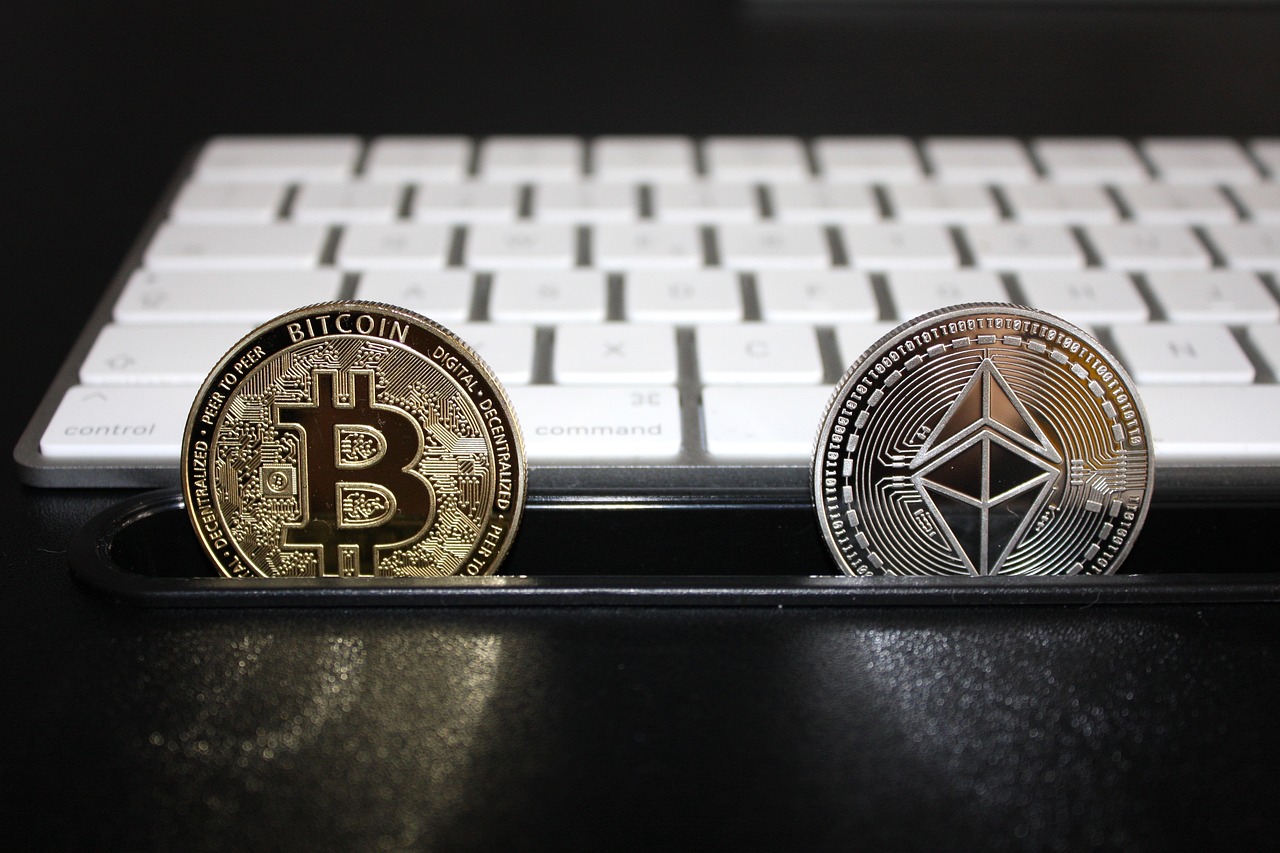
Use Cases for Metis
Metis is not just another Layer 2 solution; it's a game changer for the Ethereum ecosystem. Its versatility allows it to cater to a wide range of use cases, making it a hotbed for innovation. Imagine a bustling marketplace where decentralized finance (DeFi) applications, non-fungible tokens (NFTs), and even gaming platforms coexist and thrive. That's the potential Metis brings to the table!
One of the most significant use cases for Metis is in the realm of decentralized finance (DeFi). With its lower transaction fees and faster processing times, DeFi platforms built on Metis can offer users a seamless experience. For instance, lending and borrowing protocols can operate efficiently, allowing users to transact without the fear of exorbitant gas fees. This is particularly important as the DeFi space continues to expand, attracting more users who seek to leverage their digital assets.
Another exciting application of Metis is in the creation and management of non-fungible tokens (NFTs). Artists, musicians, and content creators can mint their unique digital assets on Metis without worrying about high costs. The platform's user-friendly interface enables creators to launch their NFT projects with ease, fostering a vibrant community of digital artists. Furthermore, the integration of DAOs allows these creators to engage with their audience directly, making decisions about their work collaboratively.
Moreover, Metis opens doors for innovative gaming applications. Imagine playing a game where you can truly own your in-game assets, trade them freely, and participate in a community-driven governance model. Metis makes this possible by providing a scalable and efficient environment for game developers to build and launch their projects. This not only enhances the gaming experience but also empowers players to have a say in the development of the games they love.
To illustrate the diverse applications of Metis, here’s a quick overview of some potential use cases:
| Use Case | Description |
|---|---|
| Decentralized Finance (DeFi) | Efficient lending, borrowing, and trading platforms with lower fees. |
| Non-Fungible Tokens (NFTs) | Creating, buying, and selling unique digital assets easily. |
| Gaming | Building games with true ownership of in-game assets and community governance. |
| Social Platforms | Creating decentralized social networks where users control their data. |
In conclusion, the potential use cases for Metis are vast and varied. As developers continue to explore and innovate on this platform, we can expect to see groundbreaking applications that push the boundaries of what’s possible in the blockchain space. With Metis, the future looks bright, and the possibilities are endless!
- What makes Metis different from other Layer 2 solutions?
Metis combines scalability with user-friendly features, making it easier for developers to create and manage decentralized applications. - Can I use Metis for NFT creation?
Absolutely! Metis is designed to facilitate the creation and trading of NFTs with lower costs and faster transactions. - Is Metis suitable for DeFi applications?
Yes, Metis is an excellent choice for DeFi projects due to its efficient transaction processing and lower fees. - How does Metis support community governance?
Metis integrates Decentralized Autonomous Organizations (DAOs), allowing users to participate in decision-making processes for their applications.

The Future of Metis
The future of Metis looks incredibly promising as it continues to evolve alongside the rapidly changing blockchain landscape. With an ever-growing demand for scalability and efficiency, Metis is poised to adapt and expand its offerings to meet the needs of developers and users alike. As we look ahead, a few key areas stand out where Metis is likely to make significant strides.
One of the most exciting prospects for Metis is its potential to enhance its decentralized autonomous organization (DAO) capabilities. By allowing users to create and manage their own governance structures, Metis not only empowers communities but also fosters a sense of ownership and collaboration among its users. Imagine a world where every application can be governed by its community, leading to more democratic and fair decision-making processes. This could revolutionize how we think about application development and governance.
Moreover, Metis is likely to explore partnerships with other blockchain projects and ecosystems. These collaborations could lead to the integration of additional features or services that would further enhance its platform. For instance, partnerships with prominent DeFi projects could facilitate seamless interoperability, allowing users to engage with multiple platforms without the usual friction. This could be a game-changer, making it easier for users to navigate the complex world of decentralized finance.
In addition to partnerships, Metis is also expected to focus on user experience. As we know, the barrier to entry for many blockchain applications can be steep, often deterring new users from participating. By prioritizing a user-friendly interface and streamlining the onboarding process, Metis aims to attract a broader audience. This focus on accessibility could significantly increase user adoption rates and, in turn, drive innovation within the Ethereum ecosystem.
Furthermore, as the demand for non-fungible tokens (NFTs) and other use cases continues to grow, Metis is well-positioned to support these developments. With its robust infrastructure, it can accommodate a diverse range of applications, from gaming to art marketplaces. The versatility of Metis ensures that it remains relevant and valuable in a rapidly evolving digital landscape.
To summarize, the future of Metis is bright and filled with opportunities. By enhancing DAO capabilities, forging strategic partnerships, prioritizing user experience, and supporting a variety of use cases, Metis is set to play a crucial role in the ongoing evolution of the blockchain ecosystem. It’s not just about scaling Ethereum; it’s about creating a vibrant, inclusive, and innovative environment where everyone can thrive.
- What is Metis? Metis is a Layer 2 scaling solution for Ethereum designed to improve transaction speeds and reduce costs, making decentralized applications more accessible.
- How does Metis enhance scalability? Metis uses innovative rollup technology to significantly increase transaction throughput, allowing applications to handle a growing user base efficiently.
- What are DAOs in the context of Metis? DAOs, or Decentralized Autonomous Organizations, are integrated into Metis, allowing users to create governance structures for their applications.
- What are the benefits of using Metis? Users can enjoy lower transaction fees, faster confirmation times, and an enhanced overall experience when utilizing Metis.
- How does Metis compare to other Layer 2 solutions? While each Layer 2 solution has its strengths and weaknesses, Metis stands out for its user-friendly interface and DAO capabilities.
Frequently Asked Questions
- What is Metis and how does it work?
Metis is a Layer 2 scaling solution built on Ethereum, designed to enhance transaction speeds and reduce costs. It operates on top of the Ethereum blockchain, which means it processes transactions off the main chain, alleviating congestion and minimizing fees while still ensuring security and decentralization.
- What are the key features of Metis?
Metis boasts several impressive features, including a user-friendly interface for developers, rapid transaction processing times, and integrated decentralized autonomous organization (DAO) capabilities. This allows users to easily create and manage decentralized applications (dApps) and engage in governance within their communities.
- How does Metis compare to other Layer 2 solutions?
When you stack Metis against other Layer 2 solutions like Optimism and Arbitrum, you'll find each has its unique strengths. Metis focuses on user experience and DAO integration, while others may prioritize different aspects like cost efficiency or transaction speed. It's all about finding the right fit for your needs!
- What benefits can users expect from using Metis?
Users can look forward to several advantages when using Metis, such as significantly lower transaction fees, faster confirmation times, and an overall enhanced experience. These benefits make Metis an appealing choice for both developers and end-users looking to navigate the Ethereum ecosystem more efficiently.
- What types of applications can be built on Metis?
Metis supports a wide range of applications, from decentralized finance (DeFi) projects to non-fungible tokens (NFTs). Its versatility opens the door for innovation across various sectors, making it a powerful tool for developers looking to create impactful dApps.
- What does the future hold for Metis?
The future of Metis looks promising as it continues to evolve with the blockchain landscape. Upcoming developments may include new features, strategic partnerships, and broader adoption, all aimed at enhancing its offerings and solidifying its place in the Ethereum ecosystem.










